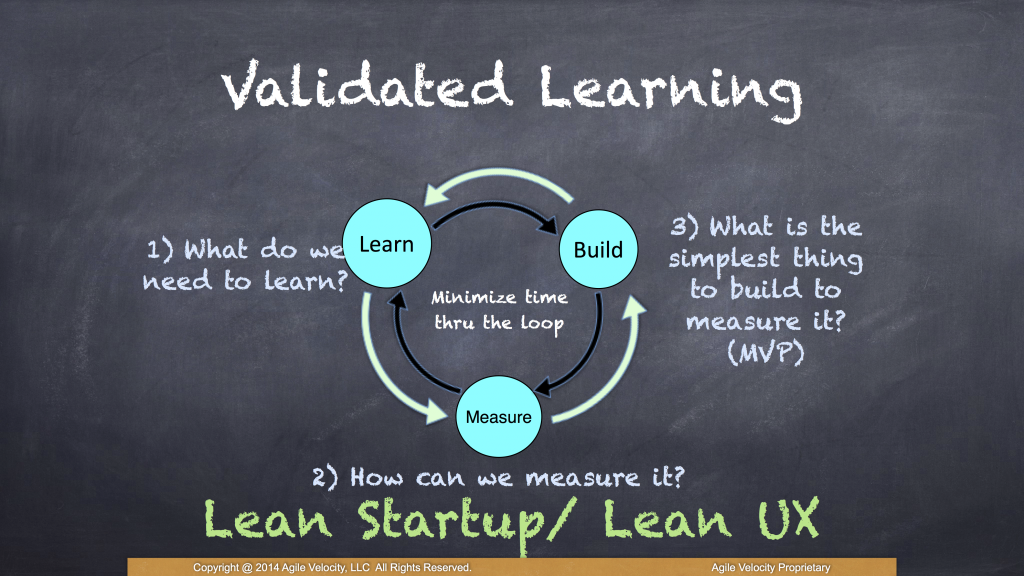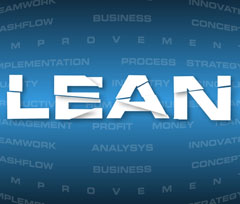 In the first post of the series, I discussed the basic building blocks of a successful in-house innovation team: small, dedicated, collocated, and self-sufficient. In this post, I’m going to talk about a key philosophy for these teams: transparency. It’s not in our nature to be transparent in the business world (or in the personal world for that matter). From the baseball diamonds of little league to the lecture halls of business school, we’re taught to be competitive and to push ahead of our colleagues. After all, it is our individual ideas and skillsets that define the quality of our work and our discipline and set us apart from our colleagues. How can being transparent – with our thoughts, our tools, techniques, and ideas – possibly help us excel as individuals, as a team, and as a company?
In the first post of the series, I discussed the basic building blocks of a successful in-house innovation team: small, dedicated, collocated, and self-sufficient. In this post, I’m going to talk about a key philosophy for these teams: transparency. It’s not in our nature to be transparent in the business world (or in the personal world for that matter). From the baseball diamonds of little league to the lecture halls of business school, we’re taught to be competitive and to push ahead of our colleagues. After all, it is our individual ideas and skillsets that define the quality of our work and our discipline and set us apart from our colleagues. How can being transparent – with our thoughts, our tools, techniques, and ideas – possibly help us excel as individuals, as a team, and as a company?
Transparency at the individual level

The first place to start, as with all of life’s improvements, is with you. Regardless of your core competency – design, engineering, management – sharing your ideas and techniques with your team early and continuously brings a whole host of benefits.
Validation of your ideas – making your ideas public early gives the team a chance to weigh in and provide their insight into the feasibility, relevancy, and validity of your thinking. This, in turn, saves you time by keeping you from exploring ideas that don’t align with the team’s vision or scope.
Collaboration – the act of sharing by itself begins a dialogue with at least one other person on your team. As that conversation, and that technique, spread beyond that initial action a spirit of collaboration takes root. In addition, you are seen as someone to whom others can seek out for feedback and further collaboration.
Thought leadership – transparency shows you’re actually getting work done (we all knew that, but it can’t hurt to show it). If you’re working on the project then you’ve likely generated ideas on how to approach it or solve the current problem. This paints you as the “idea person” and someone who has put in the time figuring the challenge out.
Source of inspiration – Your ideas, now visible to everyone on the team, serve as a starting point for feedback and discussion as well as inspiration. Teams react to initial ideas, even if they’re straw men, rather than blank whiteboards. In addition, your efforts at being transparent may inspire others on your team to be more forthcoming with their early thoughts.
Transparency at the team level
Teams, especially those trying out new ways of working, benefit greatly from open-sourcing their processes. In many ways, without even trying, transparent teams become mini-R&D units for new thinking, processes, and products. This recognition would be far more difficult to come by if the team closely guarded their internal IP. In addition, team transparency brings:
An awareness of new techniques – if some of your colleagues could benefit from a new customer interviewing technique you’ve used or a way to measure the impact of certain architectural changes, hold a brown bag lunch, and demo your new technique. Letting others see what your team is doing and how it’s working (good, bad, or otherwise) saves them the time it would take to learn those things on their own.
Consistent status updates for managers and above – nothing makes managers more anxious than not knowing what their team is currently up to. Using techniques like daily standups, weekly status updates, information radiators reporting back on the team’s success metrics, and weekly demos your managers will always be ready to answer their boss’s questions about your progress – which will keep them out of your way. Nice.
Comfort with a team’s progress (especially if measured differently) – I talk a lot about lean teams and how they should be measured against business outcomes, not a specific output. This new way of measuring is difficult for managers since it is not binary (e.g., did the feature launch or not?). By ensuring your team is consistently communicating their progress against their targets (even if the progress is not good) it gives your manager a sense of how you’re progressing. In addition, it’s important to let your manager know what you’re working on this week, what the backlog holds for the next iterations, what you’ve learned in your recent experiments and what you hope to test next.
Reduction in roadblocks for colleagues and other departments – the marketing department wants to know when you’re launching new features. The customer service folks need to know when workflow updates are going live. These folks are not trying to get in your way. They’re trying to do their job. Make it easy for them (and for you) by always communicating to them what you plan on releasing, when, and how it will affect their day-to-day work. This holds true for any department that’s dependent on the product you’re developing.
Greater sense of pride and accomplishment – if your team succeeds and has been transparent about how they succeeded, they can continually point to those successes as proud accomplishments. That sense of pride is contagious. Other teams will want it and will reach out to your team to understand how you did it and perhaps even ask you to help train their crew.
Transparency at the department level
The word department is often synonymous with the word silo – especially a discipline-specific silo. There are other types of departments though – usually product lines or industry verticals serviced by the organization. Transparency at this level – regardless of the type of department you work in – can have a dramatic impact on the way the organization perceives your department as well as the impact you can have on the organization itself. By making the company aware of the processes your teams follow, sharing insights into the specific tactics those teams use, and broadly posting the various teams’ progress towards specific business objectives your department can become a vision of what the future holds for the rest of the company. Let’s take a look at some specific impacts.
Hiring brand – every department wants to hire the best practitioners. Being transparent about how you achieve great results, what kind of empowerment employees have, and how everyone is measured and rewarded indicates a level of trust that many A-players value. It clearly indicates that your department does not micromanage and allows employees to push boundaries without fear of retribution.
Thought leadership – as the organization learns more about what your department does and how it’s faring in its business efforts the perception grows that this is the department that is leading the organization both on domain expertise as well as process.
Greater effect on company/product strategy – the mythical “seat at the table” becomes a far more realistic achievement for your department when your leadership understands what it is you do and how you do it. In addition, there is a greater confidence in the strategic suggestions your department makes to the organization because it is based on widely-available learnings you’ve socialized internally.
Transparency at the company level
Transparency at the organization level works in two directions – internally to your employees and externally to your customers. For the purposes of this article, I’m going to briefly focus on internal transparency. For external transparency and other insight into how to build successful companies you should read Dave Gray’s The Connected Company.
Internal transparency gives your employees a clear sense of how the business is doing and how their work is impacting that success. It motivates them to fix problems they can clearly see impacting revenues, customer satisfaction and other success metrics. It demystifies the “executive layer” and shows the rationale behind the decisions that come down from the C-suite. Finally, it encourages employees to be good corporate citizens and to dig into business intelligence data to find opportunities for improvement or to diagnose the root causes of problems they are tasked with fixing. Ultimately, it shows your teams that the company’s leadership trusts them.
Successful innovative teams and companies share their learnings. They share their successes and their failures. They’re honest about what they’ve tried and what they’ll try next. They build collaborative eco-systems that feed fast learning cycles and cross-pollinate innovative insights across the organization. It’s this transparency – at the individual, team, department, and company levels – that empowers innovation teams to succeed.
 This blog article is reprinted with permission by Lean UX author, Jeff Gothelf.
This blog article is reprinted with permission by Lean UX author, Jeff Gothelf.
Jeff Gothelf is an agile product designer, teacher, writer, and team leader. He is one of the leading voices on the topic of Agile UX and Lean UX. In addition, Jeff is the author of the O’Reilly book (2013), Lean UX: Applying lean principles to improve user experience. He is a highly sought-after international keynote speaker, workshop leader, and trainer. Currently, Jeff is a Principal at Neo Innovation in New York City.
 Tesla unveiled the next addition to its premium electric vehicle family, the Model 3, last week. At $35,000, Elon Musk made good on his promise for an “affordable” EV option and the public has responded by exceeded expectations for the slow rollout. According to Bloomberg, there are more than 325,000 reservations giving Tesla Motors Inc a nice $325M cash asset infusion. Implied future sales make it the “single biggest one-week launch of any product ever,” according to the company’s blog.
Tesla unveiled the next addition to its premium electric vehicle family, the Model 3, last week. At $35,000, Elon Musk made good on his promise for an “affordable” EV option and the public has responded by exceeded expectations for the slow rollout. According to Bloomberg, there are more than 325,000 reservations giving Tesla Motors Inc a nice $325M cash asset infusion. Implied future sales make it the “single biggest one-week launch of any product ever,” according to the company’s blog.
 Part 3 of 6 in the “
Part 3 of 6 in the “
 There is no doubt that the in-vogue tool today in product and software development is the “canvas”. Everywhere you look a new version appears touting new value and insights: Business Models, Opportunities Assessments, Organizational Visioning, and Sales Strategy. It seems like anything can be made into a canvas!
There is no doubt that the in-vogue tool today in product and software development is the “canvas”. Everywhere you look a new version appears touting new value and insights: Business Models, Opportunities Assessments, Organizational Visioning, and Sales Strategy. It seems like anything can be made into a canvas! “That’s not Agile and Lean!”
“That’s not Agile and Lean!” I hear these statements all the time from teams moving towards a more evidence-based approach to product discovery, conception, and production. Somewhere, someone made a decision for the teams to now “do Agile & Lean” and so, books were bought, conferences attended and index cards purchased. The teams set off with a healthy mix of trepidation and optimism and began practicing the newly learned processes – visions of stand-ups, post-it notes, IPM’s and validated learning in their heads.
I hear these statements all the time from teams moving towards a more evidence-based approach to product discovery, conception, and production. Somewhere, someone made a decision for the teams to now “do Agile & Lean” and so, books were bought, conferences attended and index cards purchased. The teams set off with a healthy mix of trepidation and optimism and began practicing the newly learned processes – visions of stand-ups, post-it notes, IPM’s and validated learning in their heads. This blog article is reprinted with permission by Lean UX author, Jeff Gothelf.
This blog article is reprinted with permission by Lean UX author, Jeff Gothelf. In the
In the 

